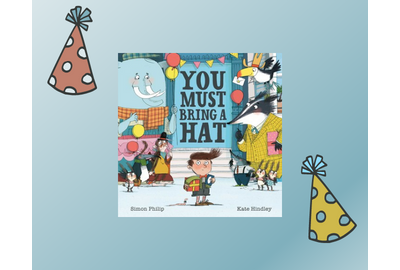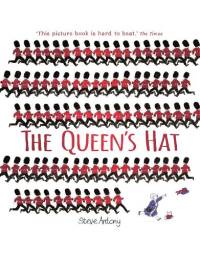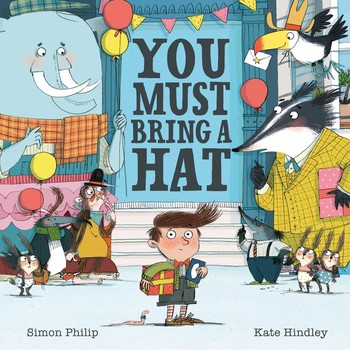

I have fallen in love with the picture book 'You Must Bring a Hat' cleverly written by Simon Philip and humorously illustrated by Kate Hindley. It is a quirky text all about what happens when a young boy receives an invitation to a very interesting party that seems to have very strict rules about who can attend! This cumulative story involves a ridiculous trail of challenges that our hero must overcome in order to get into this ‘shindig’, including finding a hat, a monocle, a piano playing badger (called Geoff) and a suitcase full of cheese! Eventually, after showing great initiative (and restraint) he loses control and demands to be allowed into the hattiest party of all time!
I have already used it for teaching across foundation, KS1 and KS2 in many different ways to inspire visual comprehension, guided reading or whole class reading sessions; modelling the process of writing; teaching the NC appendix for grammar, punctuation & spelling and stimulating great drama activities. It’s such an all-rounder! I have suggested a specific year group to use the following activities with, but as always, they are interchangeable.
Year 1
Objectives: A love for story
Activity
The front cover of the book (see above) implies that the boy must bring a hat but we don’t know why or where he must bring a hat to. He’s holding a present but we don’t know if it’s for him or if he’s giving it to someone else. There are so many questions to ask about what all the animals are going to do in the story. This is a lovely way to help children predict and create their own stories, before even reading the book!


When using it recently, I shared the front cover with the Year 1 pupils and then read the first couple of pages, showing them the invitation to the hattiest party in the world! We then talked about our favourite hat that we would wear if we were invited too. I brought a variety of hats to the session and discussed which one would be the best. (eg. a bike helmet, a woolly hat, a cowboy hat, a top hat, a flat cap) They gave me simple reasons for the different choices and then we talked about who might wear some of these different hats!
I used a page from one of my favourite books You Choose by Nick Sharratt & Pippa Goodhart to inspire this hat talk! Pupils enjoyed making predictions about which character would wear which hat! At this point pupils could create their own invitations to come to the party focusing on using superlatives. Example below -


"Come to the silliest and funniest hat party in the world! Please wear the...
biggest
smallest
softest
furriest
smartest
hat you can find!"
Much fun was then had when I told them that my friend, the bear, was also invited to the party but couldn’t go because he couldn’t find his hat anywhere. I read them I Want My Hat Back by Jon Klassen telling them that this was the story of how the bear searched for his hat and what happened next. This is a wonderful text, full of simple sentences and language that the class could confidently decode and join in with, whilst also exploring characters that say so much without actually saying very much at all! The bear has lost his beloved hat and goes around to all the other animals asking if they have seen it. Unfortunately, no-one has but there are clues for him to look out for! Eventually he realises that a rabbit has taken it! He is shocked and seeks retribution!
We brought the text to life by acting out what the bear said to the rabbit when he realises that he has stolen it and then what the rabbit responses might be! We discussed the different shape of speech bubble and then I modelled how to capture some of their oral ideas into simple sentences!
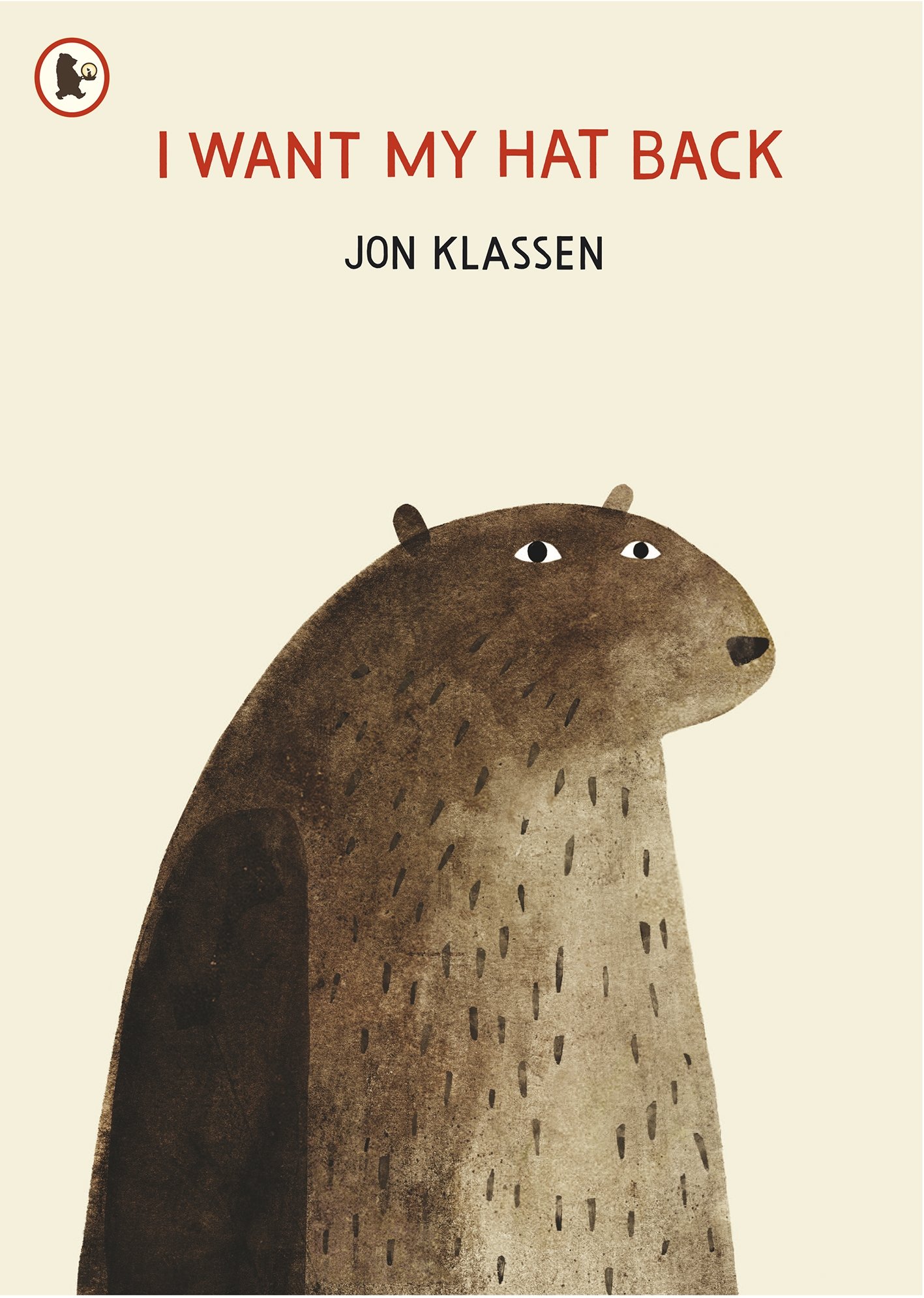

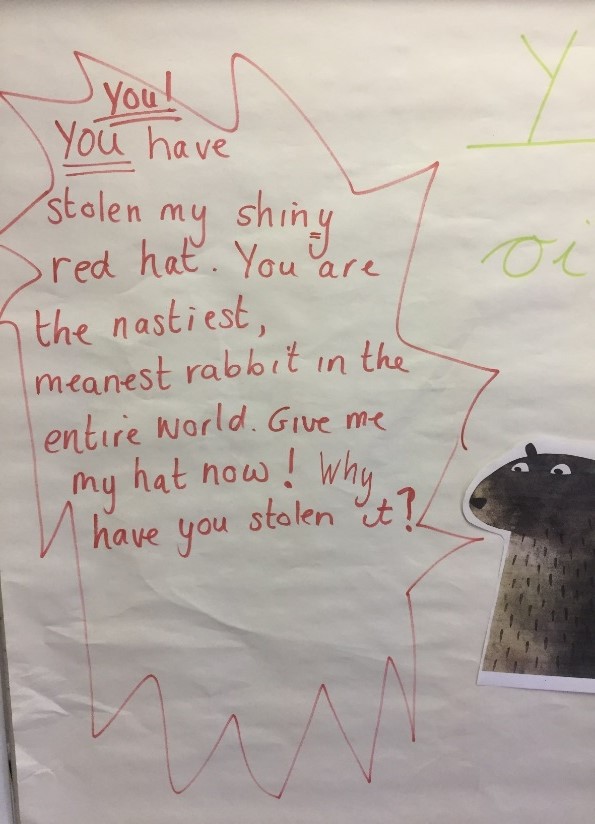

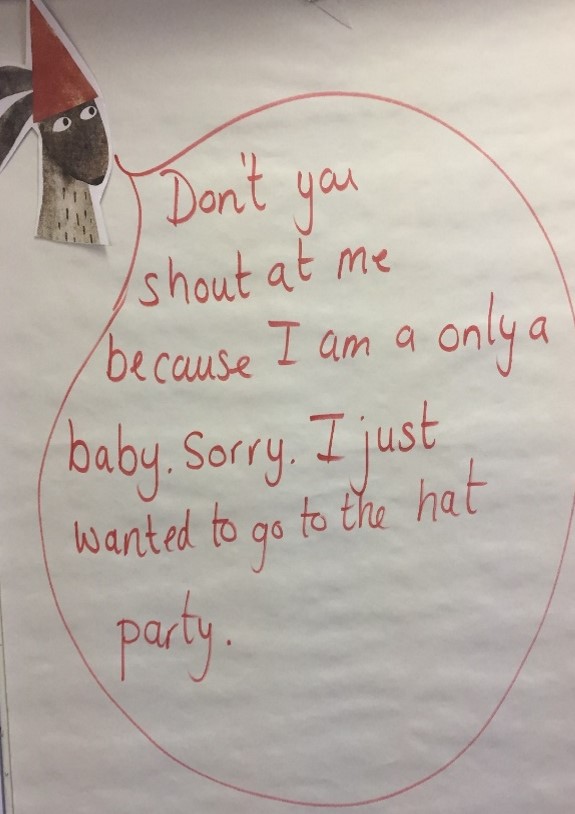



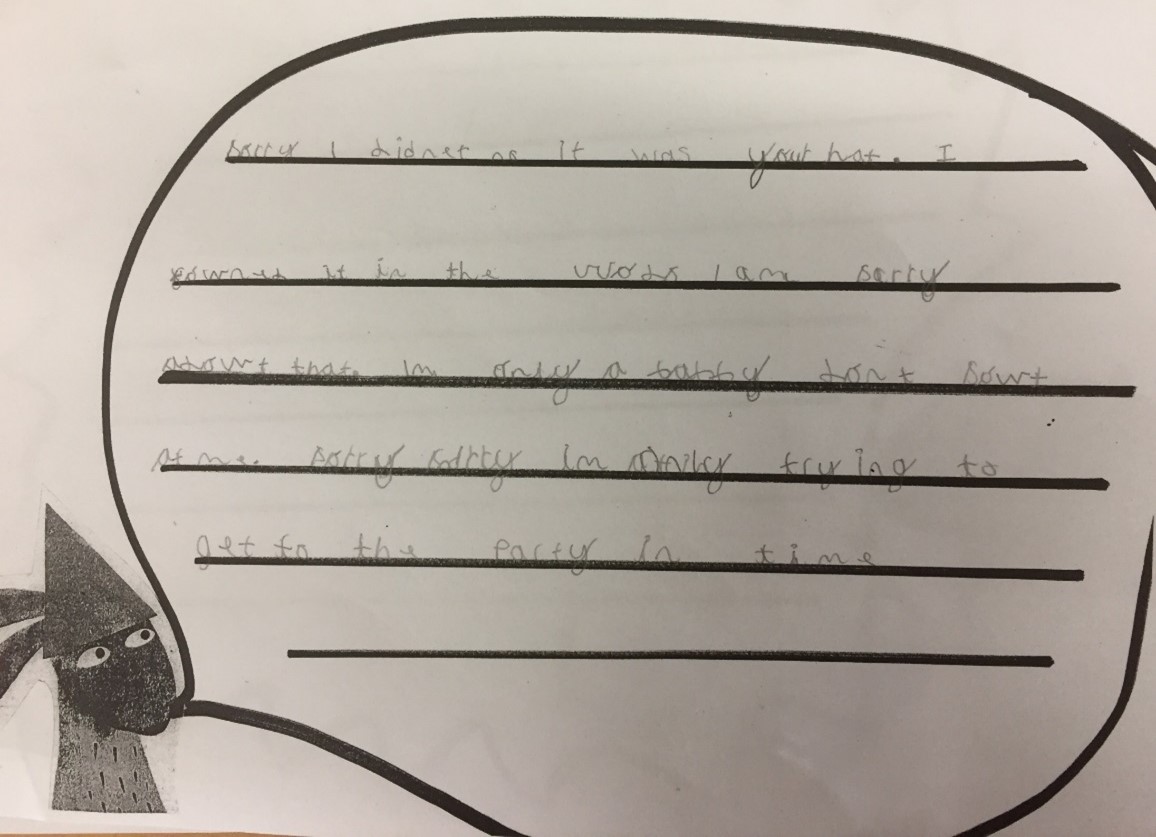

Year 2
Objectives: To know and explain vocab in context
Activity
The language in this book will challenge many year 1 and 2 children. However, pupils need to have texts read to them that are beyond their reading ability. It can then be used for encouraging skimming and scanning skills by picking a page and asking them to ‘find and point to a word’. This will train their eyes to look for specific words and then these can be discussed in context to ensure that they are reading for meaning.


Year 2 children are expected to read and spell contractions, understand the function of the apostrophe and explain what the expanded forms of contractions are. Teachers can use the examples of didn’t, that’s, I’ll, wouldn’t, we’re, I’m, can’t, isn’t to introduce or reinforce the use of the contracted form! They can then write from the role of the young boy when he gets really angry about all the conditions of the party and shouts all about it eg. I didn’t want to go to the party anyway. I’ll stay at home instead because I can’t keep doing what you want!
There is also the opportunity to do a similar focus on apostrophes for singular position as we find out about the confusion between Nigel’s and Felicity’s party! Pupils can play around with these by exploring their own names eg. Dawn’s party!
Year 3/4
Objectives: To infer characters' feelings, thoughts and motives from their actions, and justifying inferences with evidence.
Activity
There are a number of interesting characters in this text that the pupils will love. For example, they can think about what Nigel is like by reading his invitation and then create their own. Geoff the badger is such a polite creature who speaks so eloquently that the pupils can then use role-on-the-wall to collect ideas about why heacts the way he does to help others and what his life is like. Pupils could write his diary to show what he was doing when he was asked to help and where he had cycled from and even why he wears a monocle!
Year 4/5
Objectives: To identify how language, structure and presentation contribute to meaning.
Activity
This text is packed with wonderful language that pupils might need to clarify to be able to understand and enjoy the story fully. Give the pupils a highlighter pen to help them identify the formal language and then discuss. Eg.
cordially invited
invitation specifically stated
wouldn’t negotiate
but on arrival the security was pretty tight
on the condition
apparently there were other rules too
sort of badger we required
I may accompany you to your shindig
Pupils could create their own glossary for the terms. They could use the Kagan approach of quiz, quiz, trade to explore this language. Each phrase could be written on a piece of card with the definition on the back and then pupils work in pairs to test each other’s understanding of these new words/phrases. This knowledge could then be practised in focused sentence work before it is applied into their writing. They could create a new condition, for getting into the party, from the doorman and an appropriate character that the boy has to find. Fun could be had with writing the dialogue in a formal way eg. showing the negotiation between the boy and a whiskery whisky-drinking walrus named Wallace who whines wearily!
Other possible literacy activities:
Retelling: Pupils pick one of the other characters (eg. the monkey, the badger, the rabbit, the penguin) and write the story from their point of view.
Prequel: Describe what happened in the hat shop before the boy reached it, when all the other animals were desperate to get a hat for the party.
Poetry: The above could be developed into a fun list poem all about what sort of hat the different animals wore using the hat page from You Choose and descriptions of different sorts of hats to help them. The poetic line structure could focus on appropriate word level skills dependent on the age/ability of the children eg. specific noun, adjective, verb, adverb, alliteration, preposition. Here are a couple of examples of a line might be modelled in KS1 and upper KS 2:
A baboon wore a blue boater.
A bonkers baboon bravely balanced a sky-blue boater on his beautiful bonce.
Character description: Using an image of a character from the text, pupils collect ideas about their appearance, actions and speech. Work with the pupils to organise these into coherent sentences that capture the personality of the creature in how they look, what they do and how they speak.
Lower KS 2 pupils could explore the action, reaction and dialogue for when he meets the other characters in the story. Pupils must try to capture his personality in the way he spoke and write this as a descriptive paragraph, which includes dialogue.
Upper KS 2 could look at how different characters speak to explore the informal and formal way that they communicate. The teacher could model how their ideas could be structured. They could then be challenged to ‘create atmosphere and integrate dialogue to convey character and advance the action’ (Year 6 Interim Report).
Diary: Write the boy’s diary to show his version of the events and how he felt about what was happening to him. Use a story map to underpin this and support the writing. Children could write short diary entries/blogs from the point of view of the boy throughout the story – at the beginning (excited about being invited to the party, but upset that he has no hat to wear) middle (becoming agitated that there are lots of conditions to overcome to get to the party) near the end (exploding with rage when he is pushed to the limit) and at the very end (jubilant that he has finally got into Nigel’s party).
Plan: Pupils write the party plan for Nigel’s party showing the schedule that will be followed to ensure that it is a great success!
Non-chronological Report: Create the perfect hat for Nigel’s party and then produce an information page explaining why it is so perfect and what it’s features are (a great opportunity for using conjunctions to explain what each feature does).
Instructions: Teachers could recap the main features of instructional language and present some ideas to the children: ‘How to create the perfect hat’. KS2 pupils can write their instructions
and then give them to another child to follow in order to ensure that they were precise in their use of measurements, quantities, and specific verb use.
Invitation: Pupils create Felicity’s invitation using all the evidence from the story to show what her stipulations are! Constraints on the formality of it could be given to upper KS 2 writers.
Persuasion/discussion: To write the dialogue between the boy and the doorman when he is trying to get into the party with the monkey. For example, focus on the use of subordination in year 2 eg. If you let me in I will promise to be the best guest in the world.
Twitter: Children could retell this story in the style of Twitter. Share features with children – 140 letter character limit, using the hashtag, tagging people of interest into the message, using pictures. This will encourage accurate word choice and inspire imaginative responses. Don’t forget to include:
@hindleyillos
@teacher_books
@justdawned
Other hat based texts that could be used:
You Choose – Sharratt (images of hats that are great for helping pupils build up their descriptive skills)
Mrs Honey’s Hat – Adams (a cumulative story, with a repetitive refrain, about what happens to Miss Honey’s best hat over the course of a week!)
I Want My Hat Back – Klassen (a humorous story about a bear who can’t find his hat – good for writing in role)
Millie’s Marvellous Hat – Kitamura (Millie has a lively imagination and creates out-of-this world hats)
Rosie’s Hat – Donaldson & Currey (a simple story about what happens when the wind blows Rosie’s hat off!)
The Queen’s Hat – Antony (A chase story about what happens when the Queen’s hat is blown off across London. It is full of prepositions and also great for landmarks around London)
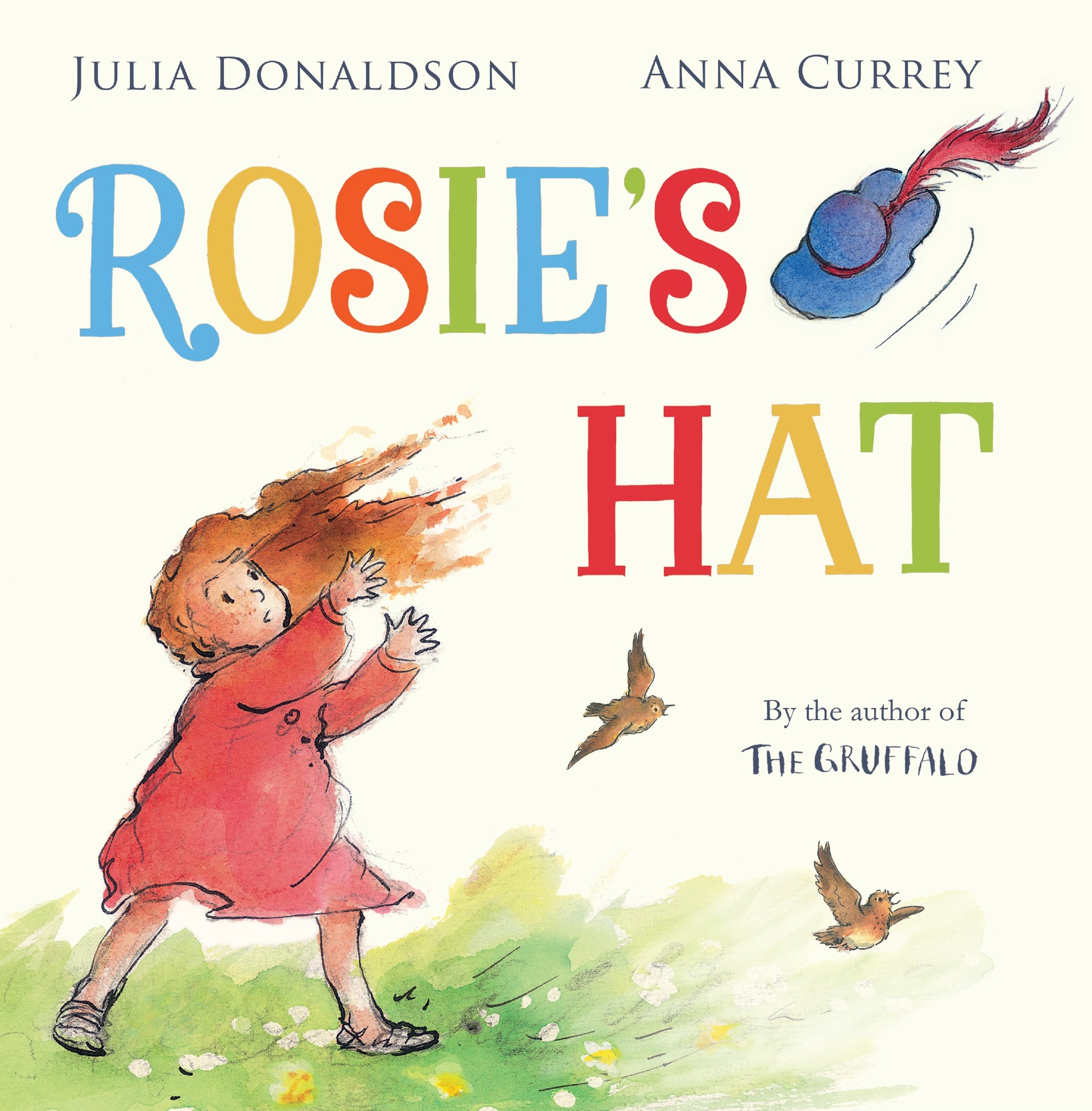

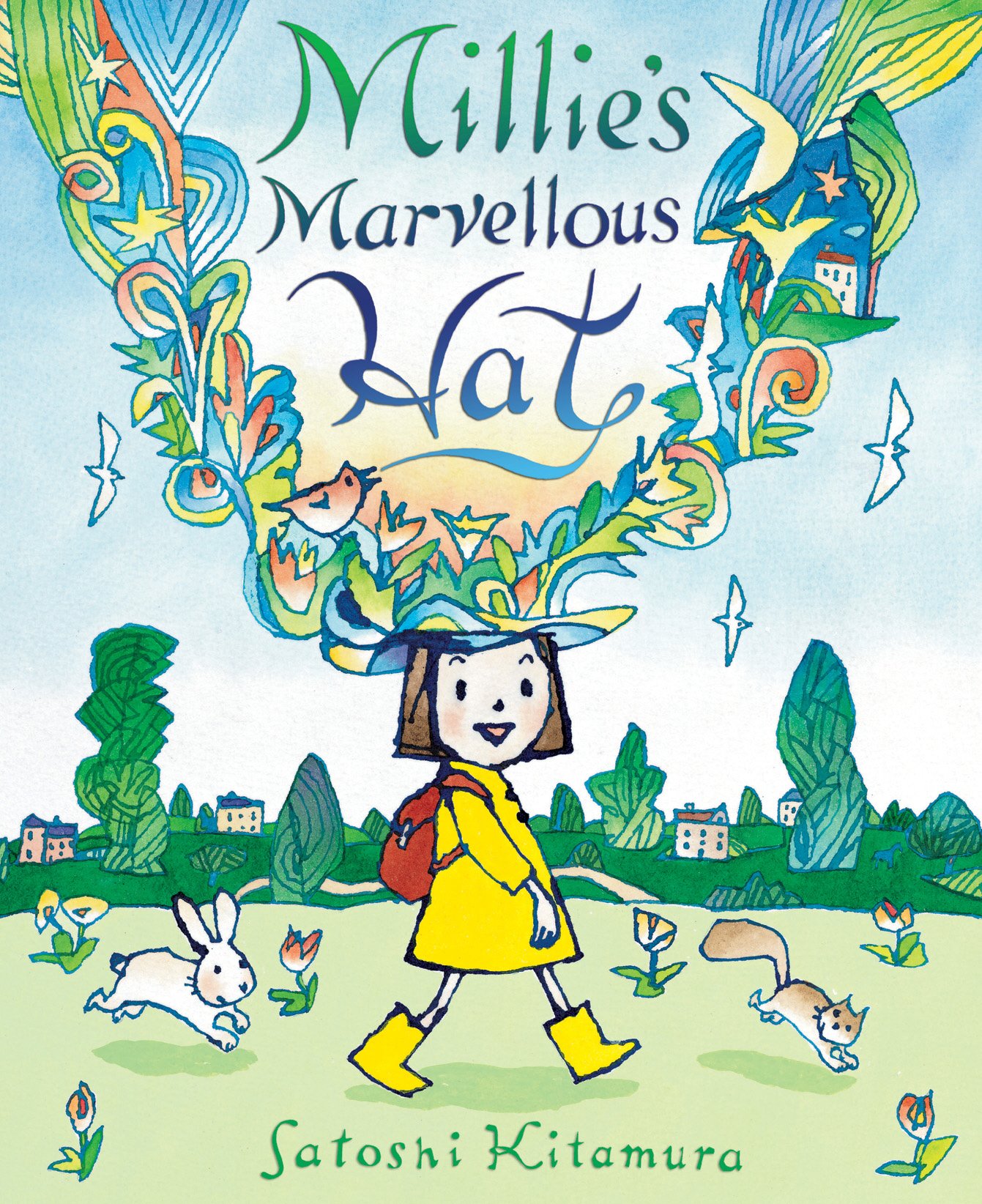

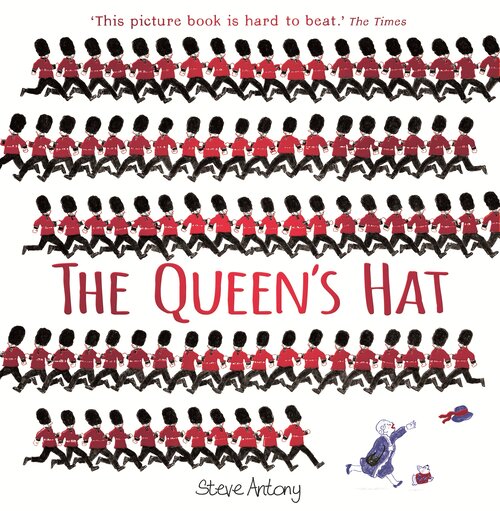

Other hat based texts that could be used:
-
You Choose – Sharratt (images of hats that are great for helping pupils build up their descriptive skills)
-
Mrs Honey’s Hat – Adams (a cumulative story, with a repetitive refrain, about what happens to Miss Honey’s best hat over the course of a week!)
-
I Want My Hat Back – Klassen (a humorous story about a bear who can’t find his hat – good for writing in role)
-
Millie’s Marvellous Hat – Kitamura (Millie has a lively imagination and creates out-of-this world hats)
-
Rosie’s Hat – Donaldson & Currey (a simple story about what happens when the wind blows Rosie’s hat off!)
-
The Queen’s Hat – Antony (A chase story about what happens when the Queen’s hat is blown off across London. It is full of prepositions and also great for landmarks around London)
Fictional characters that wear hats:
-
Cat in the Hat - Dr Seuss
-
The Mad Hatter from Alice in Wonderland - Lewis Carroll
Films/television programmes:
-
Cat in the Hat
-
Alice in Wonderland (The Mad Hatter)
-
Harry Potter and the Philosopher’s Stone (The sorting hat)
-
Camberwick Green (The hat shop!)
-
Mr Ben (All the hats he could wear when he goes into the fancy dress shop and travels to another place and time!)
-
Bob the Builder
-
Fireman Sam
Thank you so much Dawn Robertson for putting together these wonderful teachers notes. We are sure you'll be inspired after reading this post!

